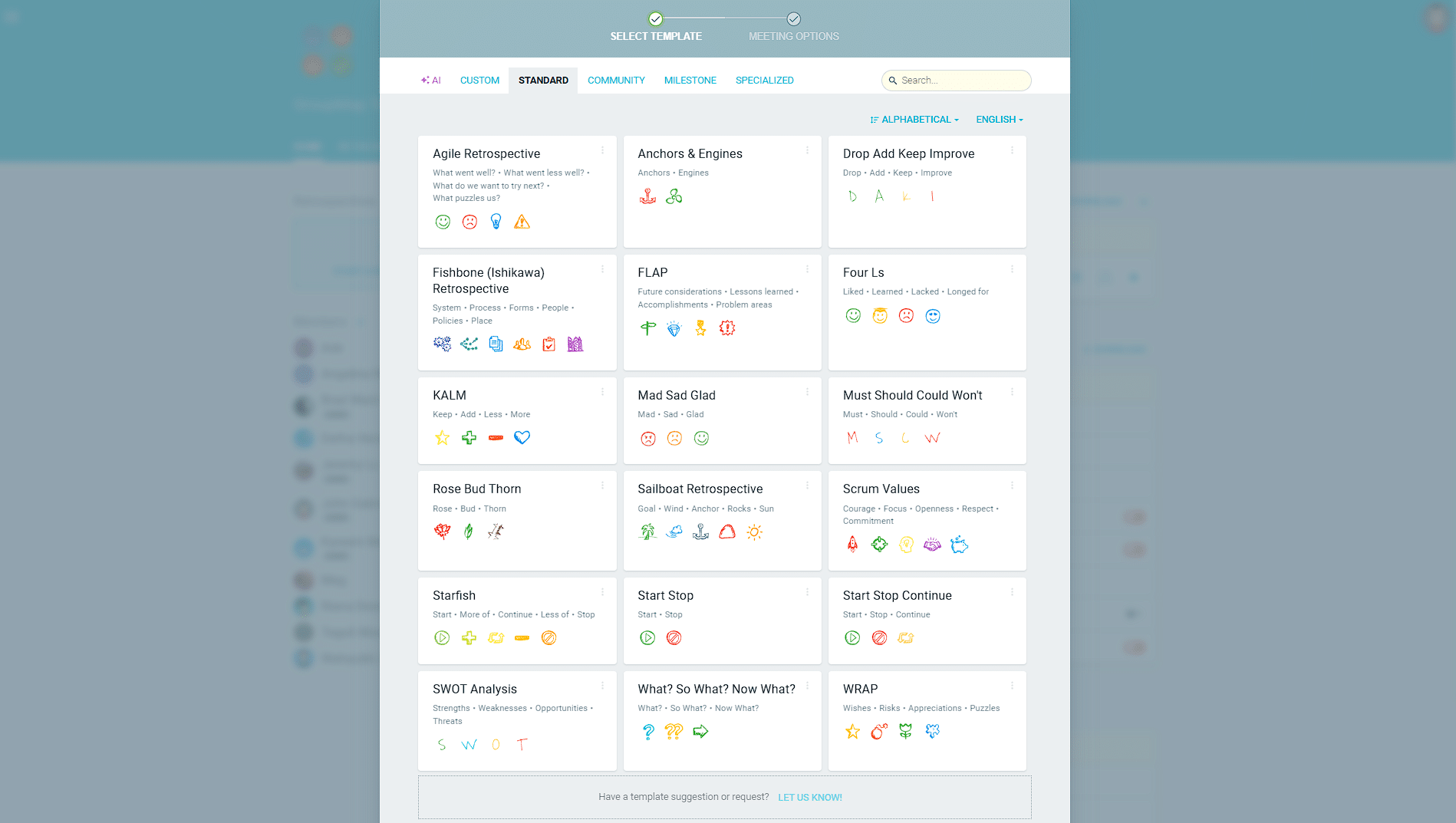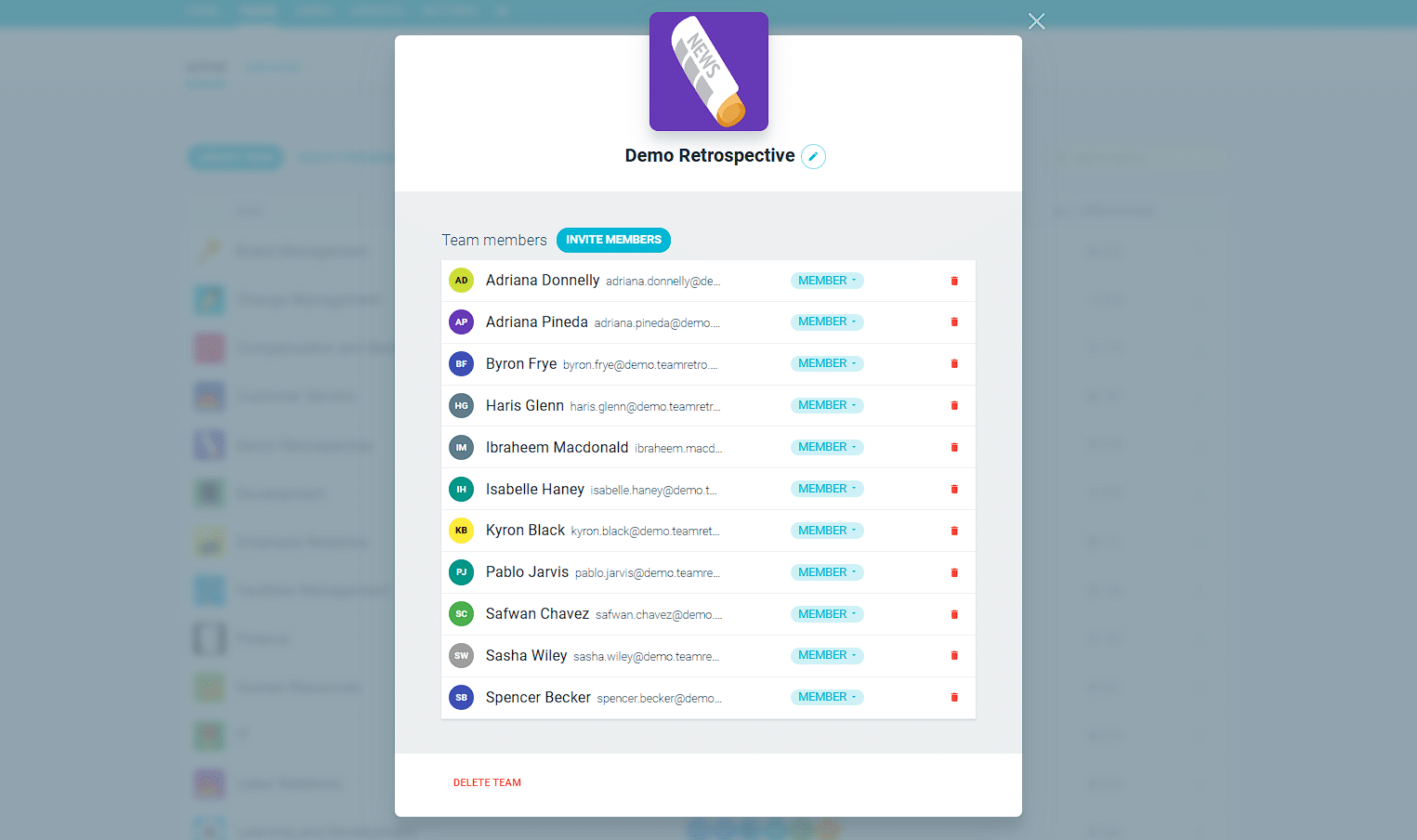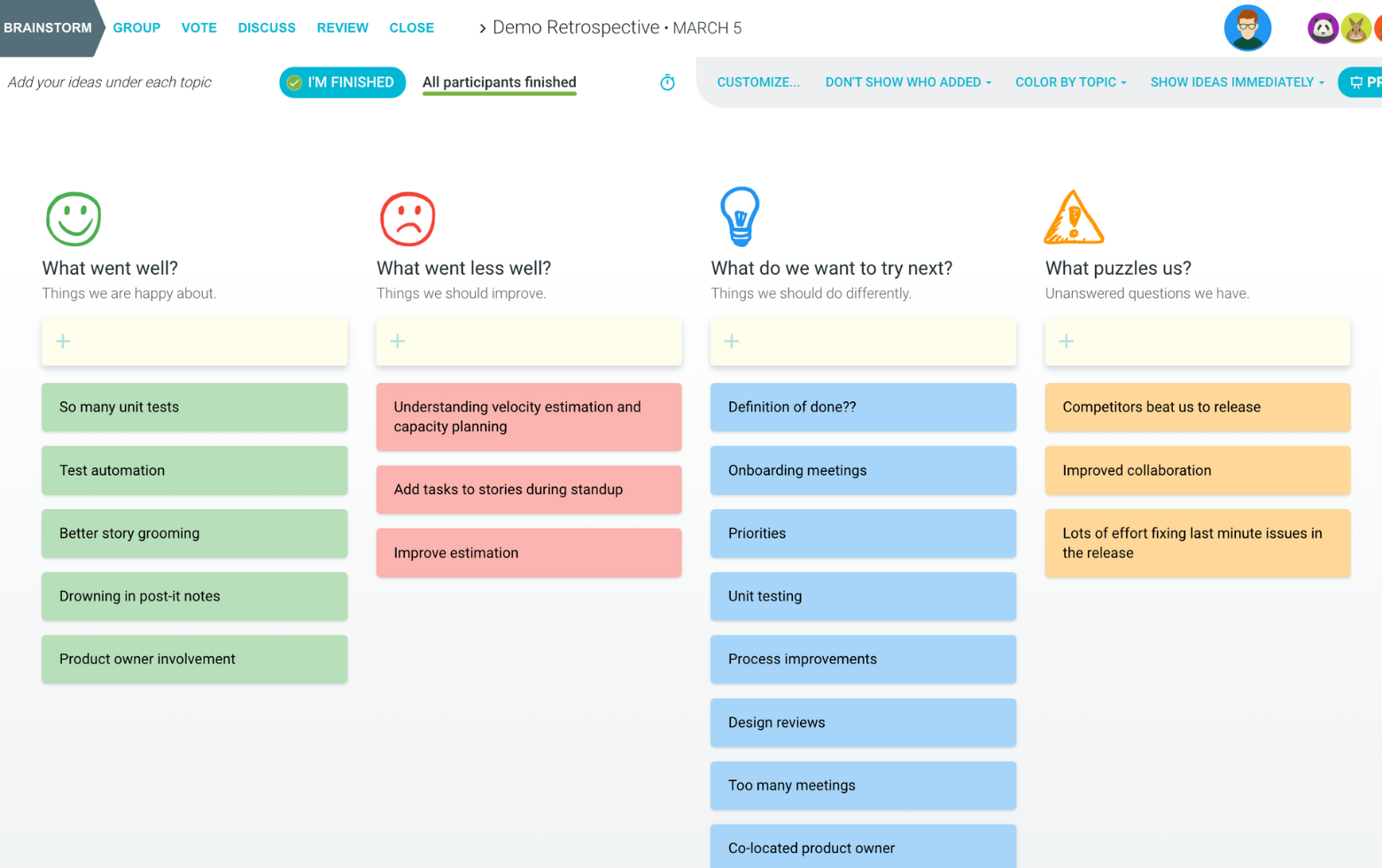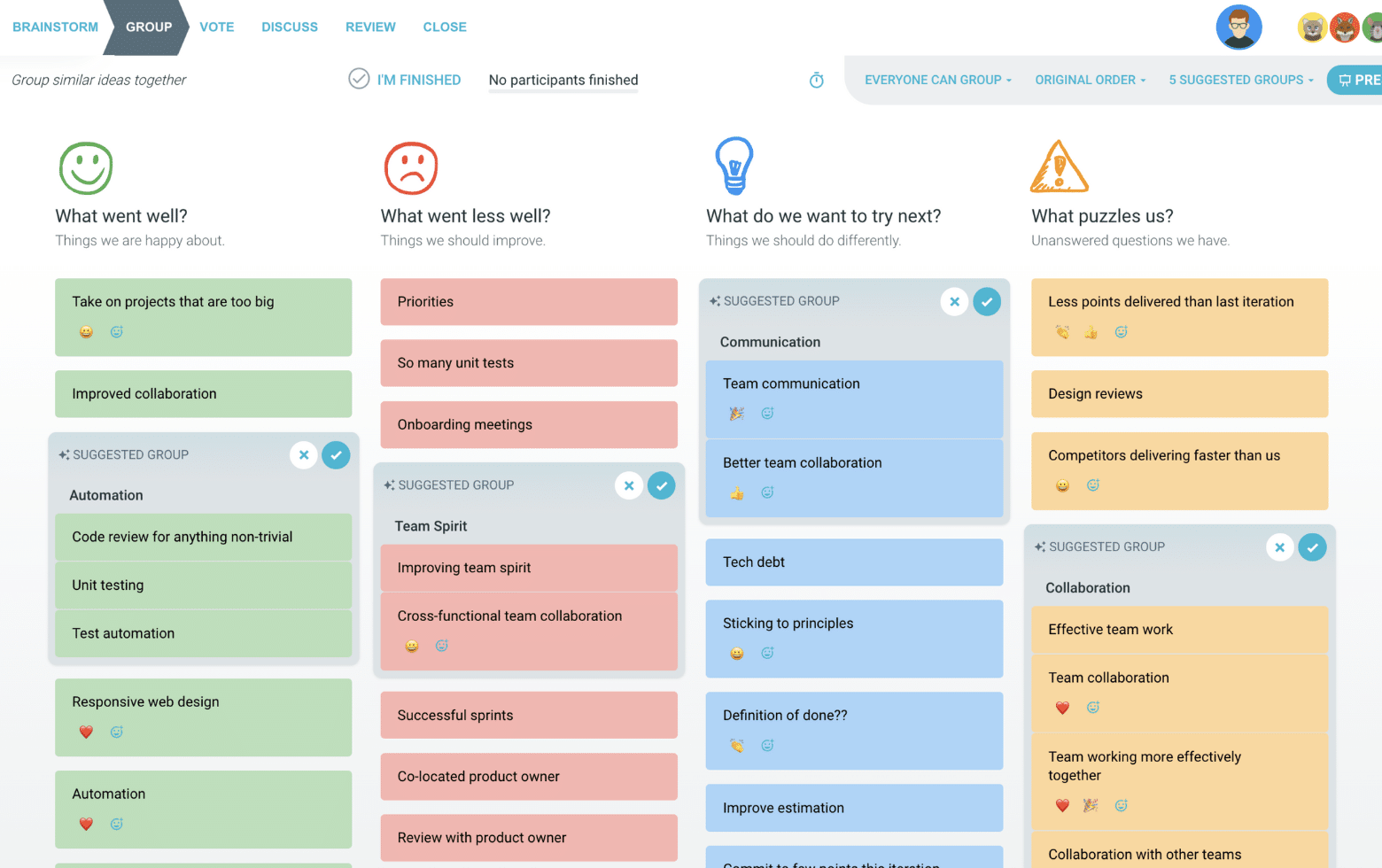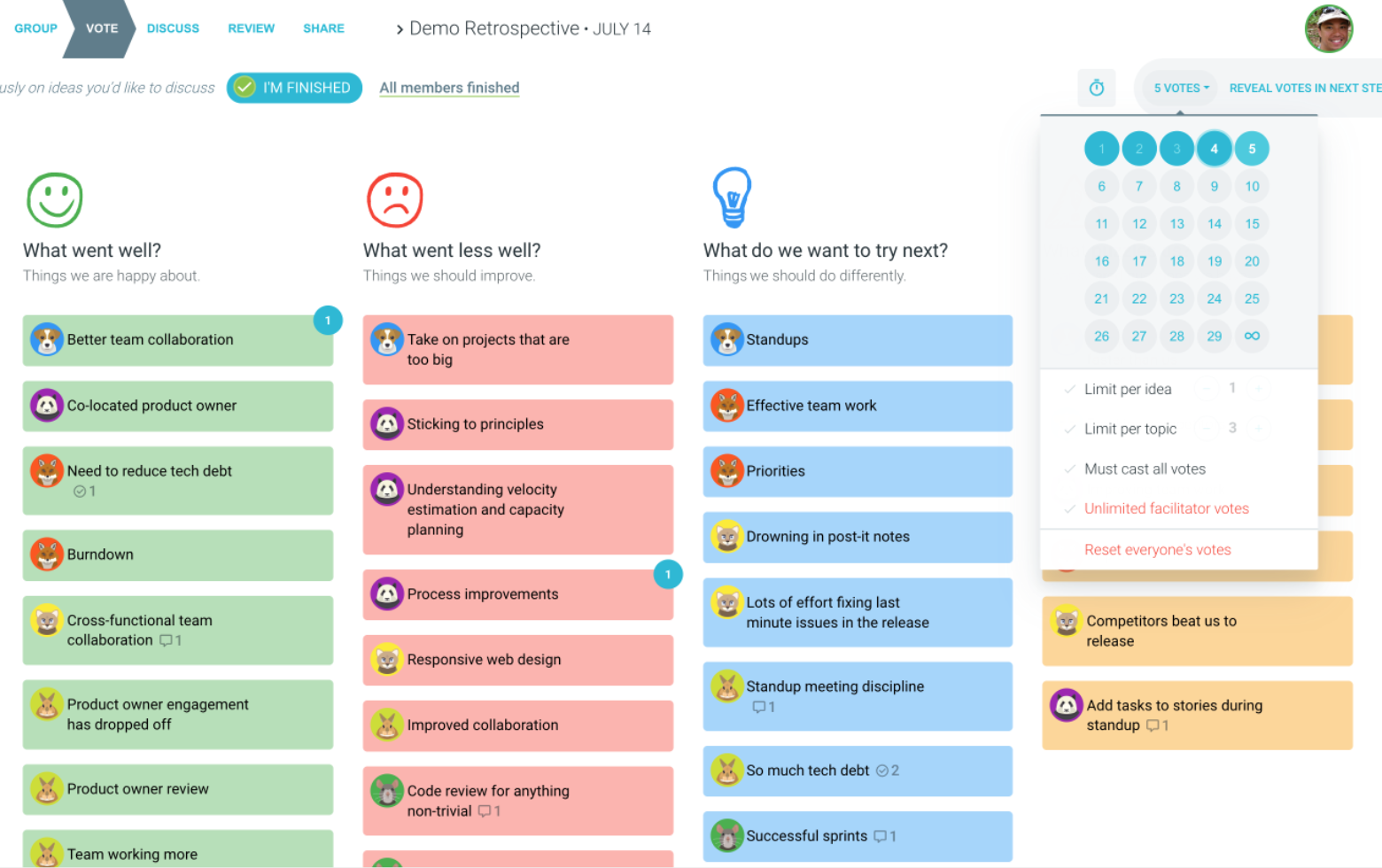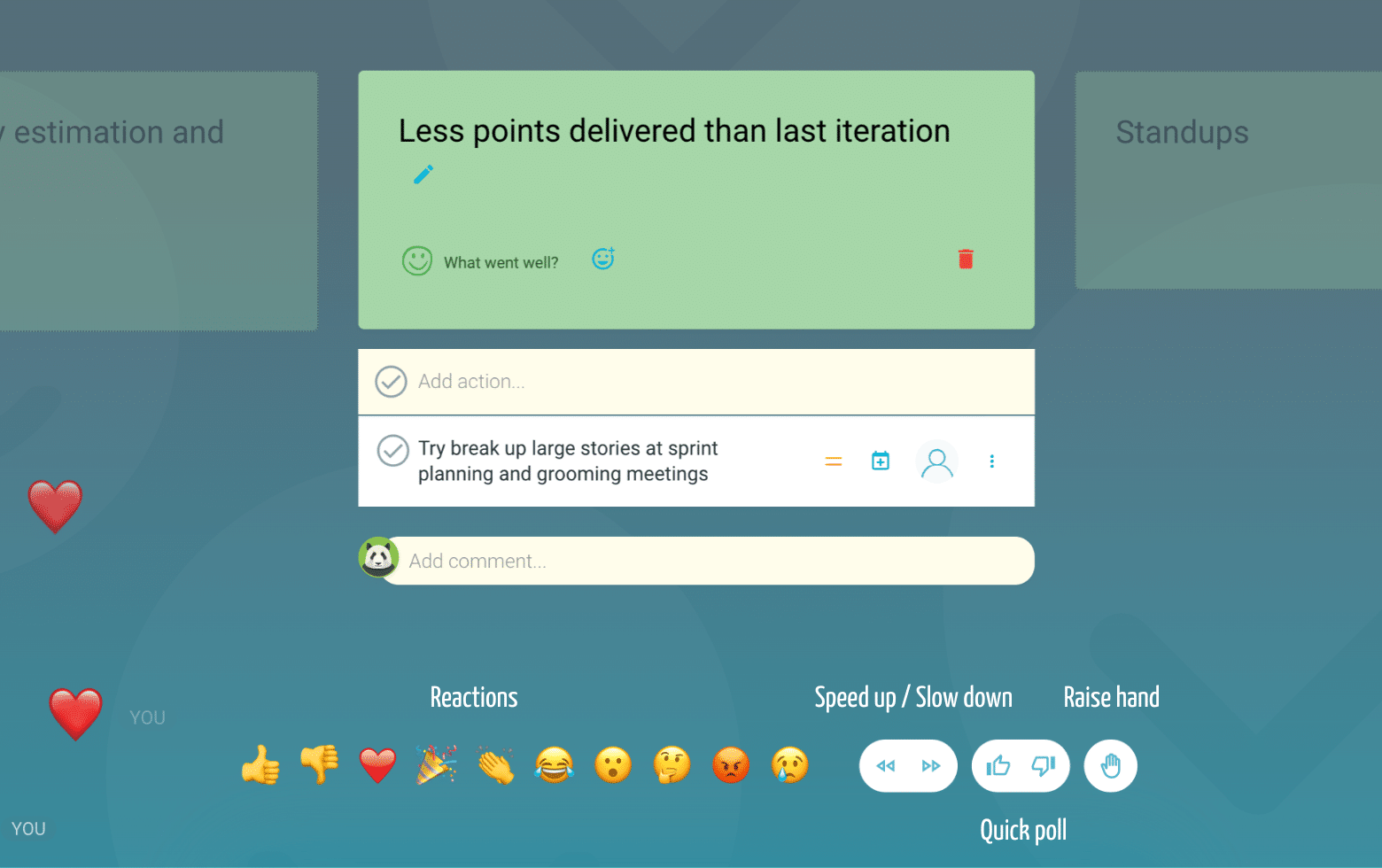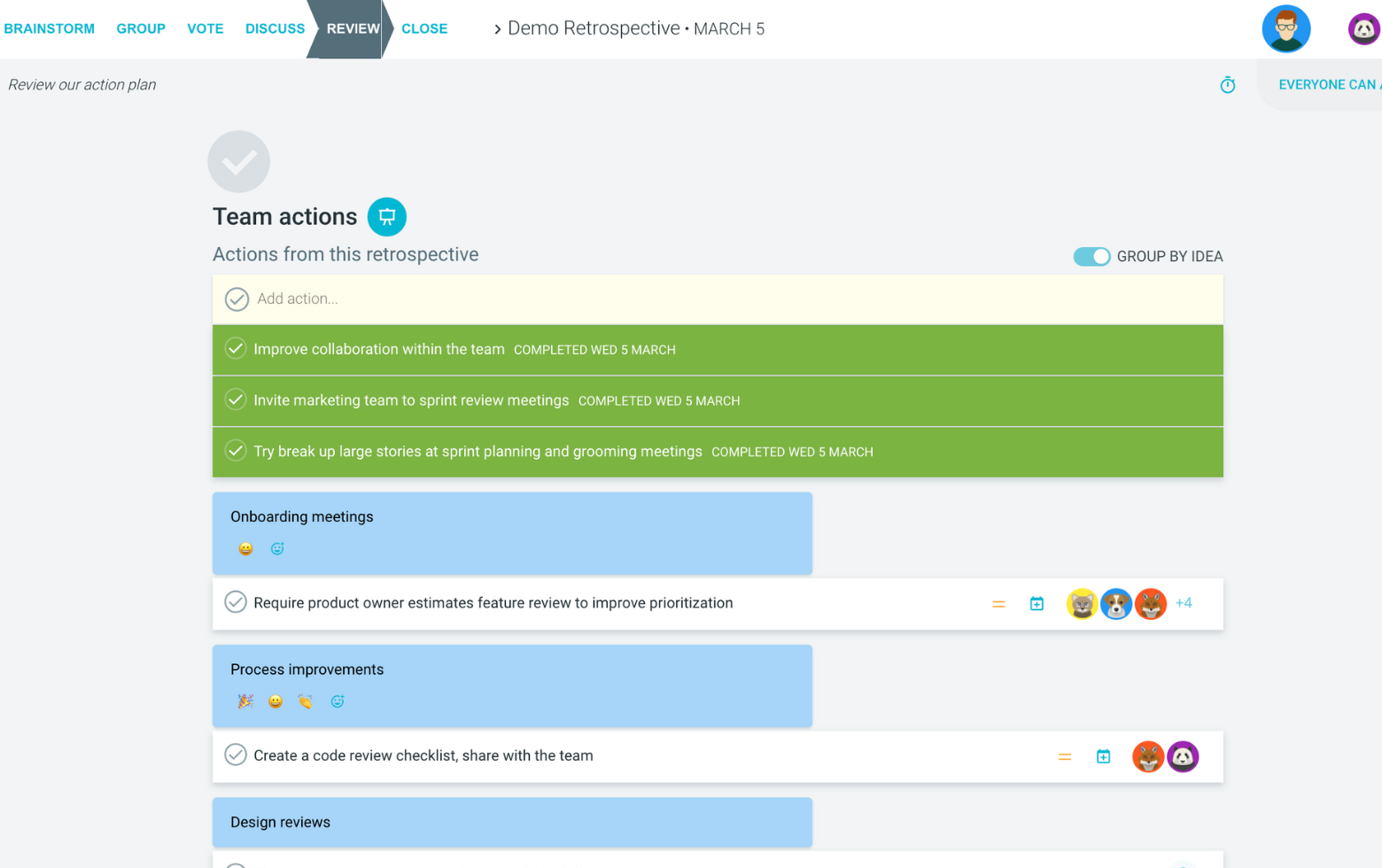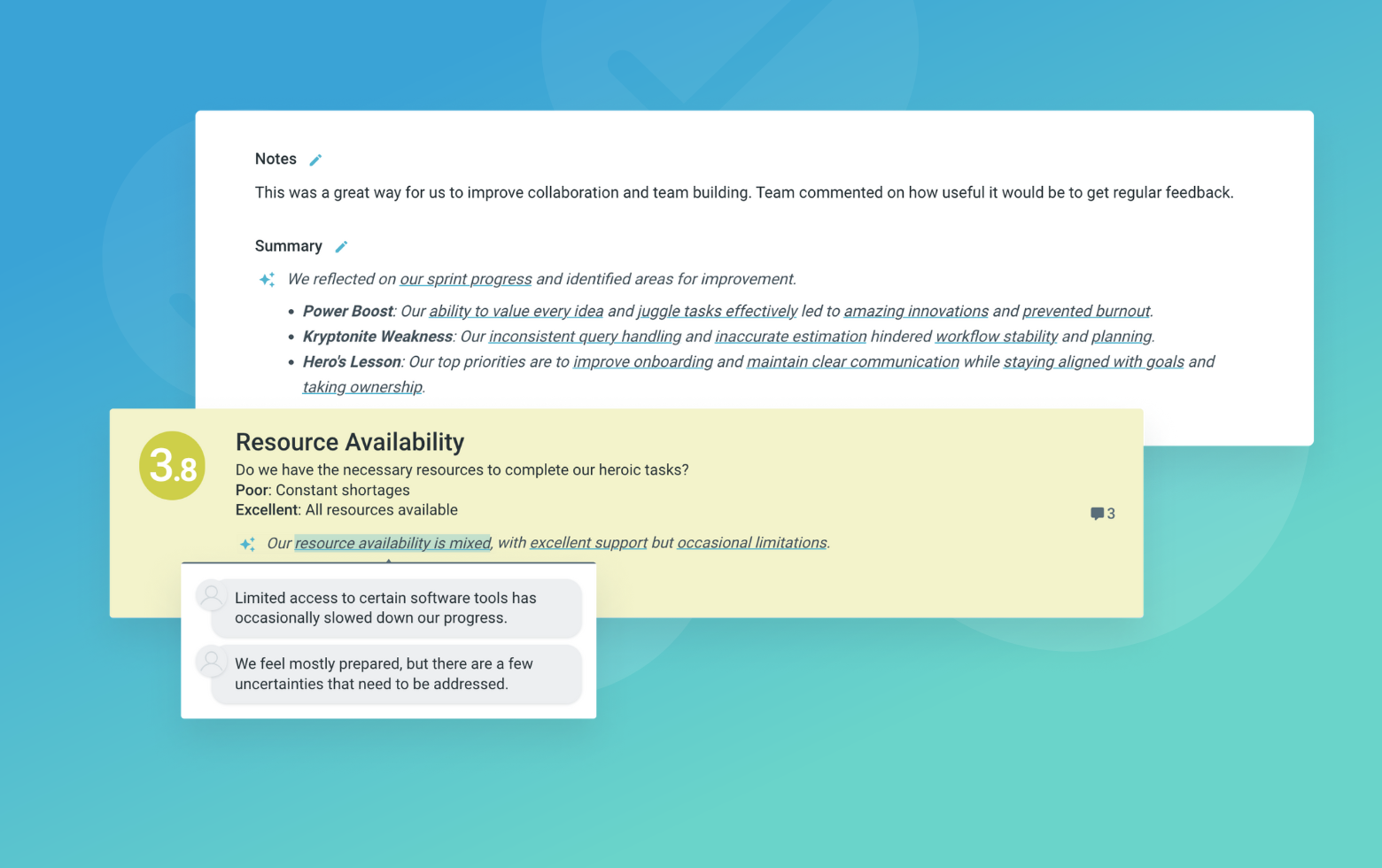The What? So What? Now What? framework, developed by Rolfe et al. (2001), is a structured reflection method that helps teams process experiences and plan future actions. This powerful approach breaks down reflection into three clear stages, making it easier for teams to analyze situations thoroughly.
In the 'What?' stage, teams focus on objectively describing events and observations without judgment. The 'So What?' phase encourages deeper analysis of these observations, exploring their significance and impact. Finally, the 'Now What?' stage channels these insights into concrete action plans for improvement.
This retrospective format is particularly effective for teams dealing with complex situations or when a systematic approach to problem-solving is needed. It helps prevent teams from jumping to solutions before fully understanding the context and implications of their experiences.
What is The What? So What? Now What? Retrospective
What?
How would you describe the situation?
Guide participants to focus on facts and observations without interpretation. Encourage them to share specific examples and details about what actually happened or what they noticed. This stage should remain objective and descriptive.
So What?
How does this affect us?
Help the team explore the implications and impact of their observations. Encourage them to consider both positive and negative effects on the team, project, and organization. This is where interpretation and analysis happen.
Now What?
What do we need to do to move forward?
Focus on creating specific, actionable items that address the insights gained. Encourage the team to prioritize actions and assign ownership. Ensure proposed solutions are realistic and within the team's control.
Suggested icebreaker questions
- What's the most surprising thing you learned last week?
- If you could instantly master one new skill, what would it be and why?
Ideas and tips for your retrospective meeting
- Keep the 'What?' phase focused on facts and observations, avoiding interpretation or judgment
- Use timeboxing for each phase to ensure balanced discussion across all three stages
- Encourage quieter team members to contribute by using round-robin or written submissions
- Create clear connections between observations in 'What?' and actions in 'Now What?'
- Document actions with specific owners and deadlines to ensure follow-through
- Consider using dot voting to prioritize which insights to focus on in the 'Now What?' phase
.
How to run effective meetings with TeamRetro
Start Your Session in a Click
Log into TeamRetro and choose your template. Customise questions and the workflow to create your perfect retro for your team.
Create Your Team Easily – No Separate Accounts Needed
Brainstorm Individually – Free From Bias
Smart Grouping for Faster Insights
Fair, Flexible, and Fast Voting
Engage, React, and Capture Key Insights
Walk your team through ideas one by one with Presentation Mode. Stay in sync, spark real-time discussions, and capture feedback with comments, live reactions, and polls—all in one place.
Turn Ideas Into Action
Propose next steps with team buy-in, get AI-powered action suggestions, and keep everything in one place. Committed actions sync to your personal dashboard and integrate with your workflow tools—keeping you on track.
Save, Share, and Stay on Track
Get quick AI-powered summaries, add facilitator notes, and store retrospectives in your library for easy access. Schedule your next session and track published actions to keep your team accountable at the next retro.
Turn Team Data into Actionable Insights
Uncover trends, common themes, and key engagement metrics at a glance. Track sentiment shifts, analyze conversations, and monitor completed actions to drive continuous improvement.
